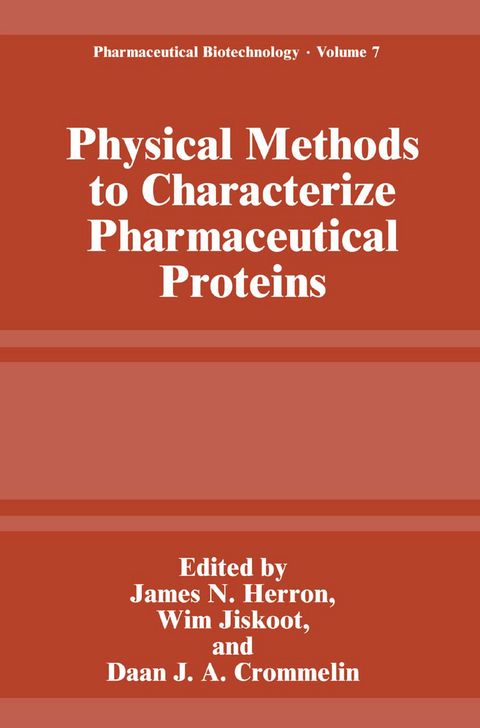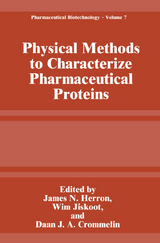Physical Methods to Characterize Pharmaceutical Proteins
Seiten
1995
Kluwer Academic/Plenum Publishers (Verlag)
978-0-306-45026-6 (ISBN)
Kluwer Academic/Plenum Publishers (Verlag)
978-0-306-45026-6 (ISBN)
Proteins are still gaining importance in the pharmaceutical world, where they are used to improve our arsenal of therapeutic drugs and vaccines and as diagnostic tools. Proteins are different from "traditional" low-molecular-weight drugs. As a group, they exhibit a number of biopharmaceutical and formulation problems. These problems have drawn considerable interest from both industrial and aca demic environments, forcing pharmaceutical scientists to explore a domain previ ously examined only by peptide and protein chemists. Biopharmaceutical aspects of proteins, e.g., low oral bioavailability, have been extensively investigated. Although all possible conventional routes of ad ministration have been examined for proteins, no real, generally applicable alter native to parenteral administration in order to achieve systemic effects has yet been discovered. Several of these biopharmaceutical options have been discussed in Volume 4 of this series, Biological Barriers to Protein Delivery. Proteins are composed of many amino acids, several of which are notorious for their chemical instability. Rational design of formulations that optimize the native structure and/or bioactivity of a protein is therefore of great importance when long shelf life is required, as it is for pharmaceutical products. This issue has also been examined in two prior volumes of this series: Volume 2: Stability of Protein Pharmaceuticals (Part A) and Volume 5: Stability and Characterization of Protein and Peptide Drugs.
1 Application of Fluorescence Spectroscopy for Determining the Structure and Function of Proteins.- 2 Structural Information on Proteins from Circular Dichroism Spectroscopy: Possibilities and Limitations.- 3 Fourier Transform Infrared Spectroscopy Investigations of Protein Structure.- 4 Mass Spectrometry in Protein Structural Analysis.- 5 Two-, Three-, and Four-Dimensional Nuclear Magnetic Resonance Spectroscopy of Protein Pharmaceuticals.- 6 Thermodynamic Strategies for Rational Protein and Drug Design.- 7 Chromatographic Techniques for the Characterization of Proteins.- 8 Capillary Electrophoresis of Proteins.- 9 Applying Genetic Engineering to the Structural Analysis of Proteins.
| Reihe/Serie | Pharmaceutical Biotechnology ; 7 |
|---|---|
| Zusatzinfo | XVIII, 362 p. |
| Verlagsort | New York |
| Sprache | englisch |
| Maße | 155 x 235 mm |
| Themenwelt | Medizin / Pharmazie ► Pharmazie ► PTA / PKA |
| Naturwissenschaften ► Biologie ► Zoologie | |
| Naturwissenschaften ► Physik / Astronomie ► Angewandte Physik | |
| Technik | |
| ISBN-10 | 0-306-45026-7 / 0306450267 |
| ISBN-13 | 978-0-306-45026-6 / 9780306450266 |
| Zustand | Neuware |
| Informationen gemäß Produktsicherheitsverordnung (GPSR) | |
| Haben Sie eine Frage zum Produkt? |
Mehr entdecken
aus dem Bereich
aus dem Bereich
wirkstoffbezogene Beratungsempfehlungen für die Pharmazeutische …
Buch | Softcover (2025)
Deutscher Apotheker Verlag
36,00 €
medizinisch-pharmazeutischer Leitfaden für die Beratung in der …
Buch (2024)
Avoxa (Verlag)
29,90 €




